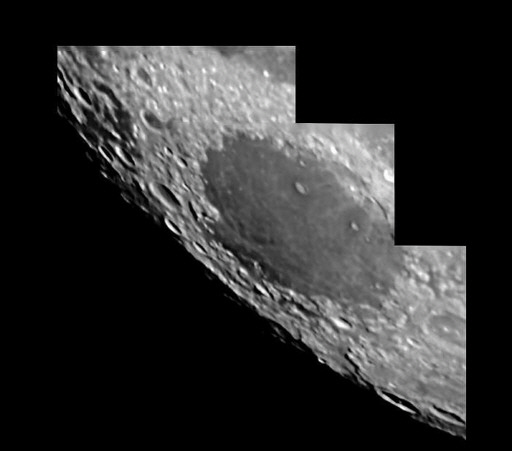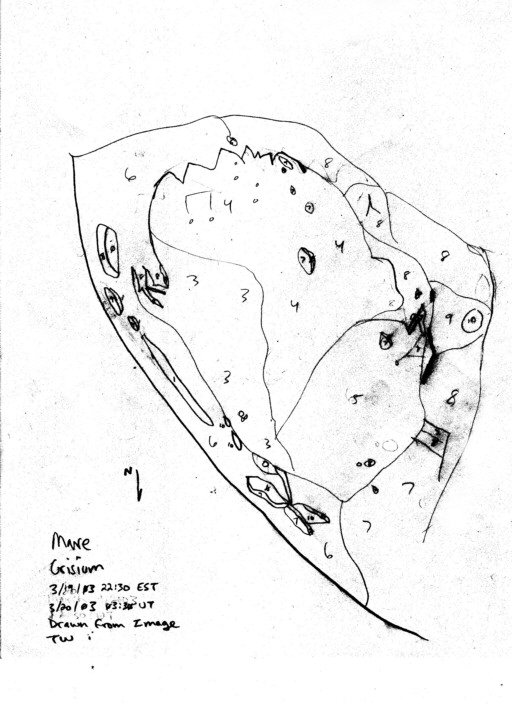In December 2002 I became a
member of the Association of Lunar and
Planetary Observers. After joining I
purchased an Association publication
entitled: "The Novice Observer's
Handbook" by Tim Robertson and Matthew
Will. This text is intended to prepare
members who wish to submit scientifically
valid observations to the Association. One of
the requirements is that the student learn to
sketch their observation. Drawing is
emphasized over imaging on the basis that it
requires the observer to become more involved
in the observation. Drawing will train the
observer to more adeptly pick out features
and contrast differences.
I'm not much of an artist
(although I have done some notable crayon
art, but that's a story for another time). I
decided that, rather than use up a clear
night at the scope, I'd practice by sketching
from an image. Two nights after the full moon
I got a decent 250X image of Mare Crisium. I
used this to create my first practice sketch:

I purchased a set of drawing
pencils on-line from a company called In2Art
(www.in2art.com). The
pencil set was "Generals Graphite
Drawing Kit #25" and contained 10
pencils each with a different lead, an eraser
and a sharpener. I also picked up a number of
assorted blending stumps which help to smooth
out the pencil strokes and blend intensities.
The whole package with shipping was less than
$15, I had a nice smooth transaction with the
stuff arriving at my house about 1 week after
I placed my order. Following the instructions
in the ALPO Handbook, I first made an outline
of the subject, and then added intensity data
to it. The intensity data is just the
assignment of numbers representing light and
dark, (0 - black, 10 - white, 1-9 shades of
grey getting lighter with higher numbers).
Here's my first intensity diagram:

It
took me over an hour to make this drawing
with the intensity estimates. The ALPO
handbook says it should take around 45
minutes, so it's clear I need more practice.
Finally, the technique calls for shading in
all the areas with the appropriate intensity,
as specified by the intensity drawing. It
took me another hour to complete this stage
and to arrive at my final drawing of Mare
Crisium. Here are the image and final
drawing, side by side:
Overall
I guess I'm ok with this first attempt. It's
going to take some time to understand how to
work with the various pencils, some are hard
and light, some soft and dark, some blend
well, some don't. Also, choosing a Mare as my
first subject probably wasn't wise. A smaller
object at higher magnification might be
better. Practicing drawing from an image
seems like the way to go, so as to not waste
valuable time at the telescope learning how
to make the drawings. After I've done a few I
might be more inclined to do them in the
field.
-to
be continued-
<< back
